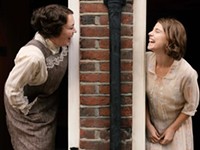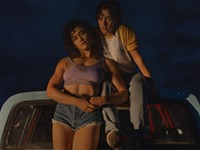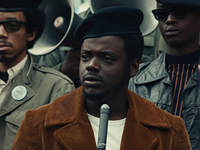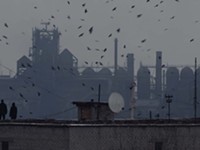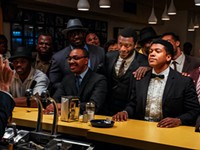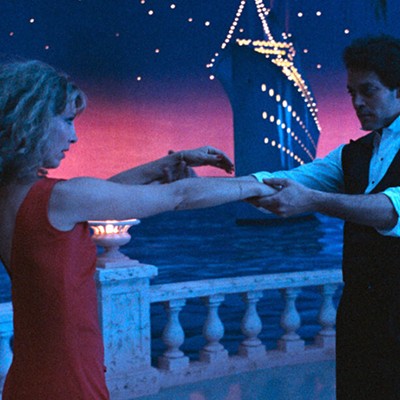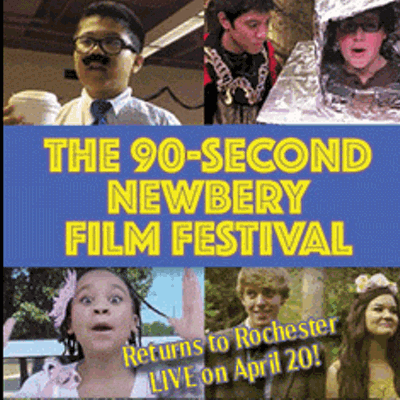[
{
"name": "500x250 Ad",
"insertPoint": "5",
"component": "15667920",
"parentWrapperClass": "",
"requiredCountToDisplay": "1"
}
]
The term "disaster movie" tends to conjure up thoughts of summer blockbusters; disposable entertainments designed to excite audiences with endless scenes of CGI-enhanced destruction. They're usually the type of movies that want us to root for the survival of the main characters while simultaneously asking us to ignore the offscreen deaths of hundreds of thousands, whether they meet their doom at the hands of invading aliens, undetected volcanoes, or a giant asteroid. Thanks to the talented director Juan Antonio Bayona, "The Impossible" — despite a terrible title — is something else entirely: an often harrowing drama that places audiences squarely in the path of the devastating Indian Ocean tsunami that claimed the lives of more than 230,000 people in December 2004. In his hands, the tsunami becomes less a thrilling spectacle we can watch while munching on popcorn in the safe cocoon of a darkened theater, and more of a legitimately horrifying experience we feel we've somehow managed to live through.
"The Impossible" tells true story of the Belón family. Maria, Henry, and their three young sons were spending their Christmas vacationing in Thailand when fate intervened and put them in the middle of one of the worst natural disasters in recorded history. Though separated, the entire family fought to survive and eventually reunite with one another, in a remarkable demonstration of the capacity for the human spirit to carry on despite seemingly insurmountable odds.
Inexplicably, the film transforms the Spanish Belóns into WASPy Brits, played by Naomi Watts and Ewan McGregor in the roles of Maria and Henry, respectively. One could (and probably should) debate the reasoning behind the change, which somehow makes a story about an event that impacted hundreds of thousands of Thais, Indians, Indonesians, and Sri Lankans, all about a family of pretty white people. It's particularly odd considering the film was largely a Spanish production. Bayona himself claims that the decision was made to make the story more universal, and that the nationalities of the protagonists weren't important, but one can't help sensing the intervening hand of a box-office-minded studio executive. But maybe I'm just being cynical.
Regardless of the reasons for their casting, Watts and McGregor both turn in phenomenal performances that are admirably absent of the vanity that typically accompanies such films, where the actors appear attractively disheveled, hair mussed just so, a carefully placed scratch on one cheek so as not to detract from their movie-star good looks. Here, the actors look like they've been through hell. These are physically demanding roles, but the actors never lose sight of the real people they portray. Parents who decide to see the film will likely find it hard not to put themselves in Maria or Henry's shoes. Despite the strong work of the leads, the film's best performance belongs to young actor Tom Holland as the eldest son, who must call upon strength beyond his years in order to act as his severely injured mother's protector.
Though aided by capable actors, the film is first and foremost Bayona's show. Obviously calling on his background in horror (he's previously best known for the 2007 ghost story, "The Orphanage"), he brings a unique sensibility — a sort of "reality horror" — to the film and demonstrates an astonishing level of control over the material. He steers clear of schmaltz for the most part, and the few indulgences toward the end of the film feel earned after what the characters (and the audience) have been through. Created mostly through the use of scale models, the stunning 10-minute tsunami sequence is a visceral, terrifying experience that left quite a few people in the theater I was in visibly shaken. I was surprised to find that the film didn't make the shortlist of possible Best Visual Effects nominees for this year's Oscars. Apparently that wing of the Academy only chooses to highlight films that are carried by their special effects, rather than ones where the effects support the story. Still, I'd expect to see the film receive recognition in several of the below-the-line categories. The sound design in particular is speaker-rattlingly effective.
Perhaps most impressively, while "The Impossible" is clearly about one specific family's fight for survival, Bayona never ignores the scope of what's happening. The Belóns may be surrounded by thousands of nameless extras, but Bayona finds ways to call attention to them as well. It's never enough to pull focus from the main characters, but just enough so that they register, reminding us that we're watching just one story among hundreds of thousands, many of which didn't end with a happy, tear-filled reunion.

